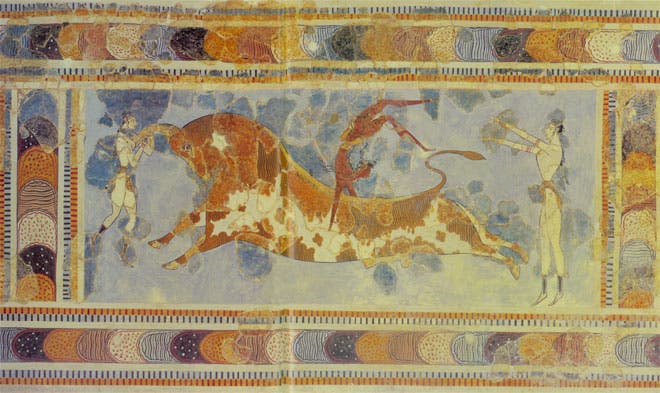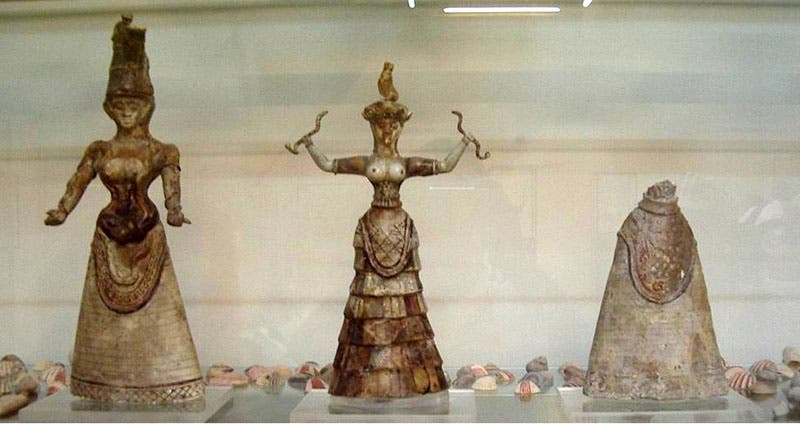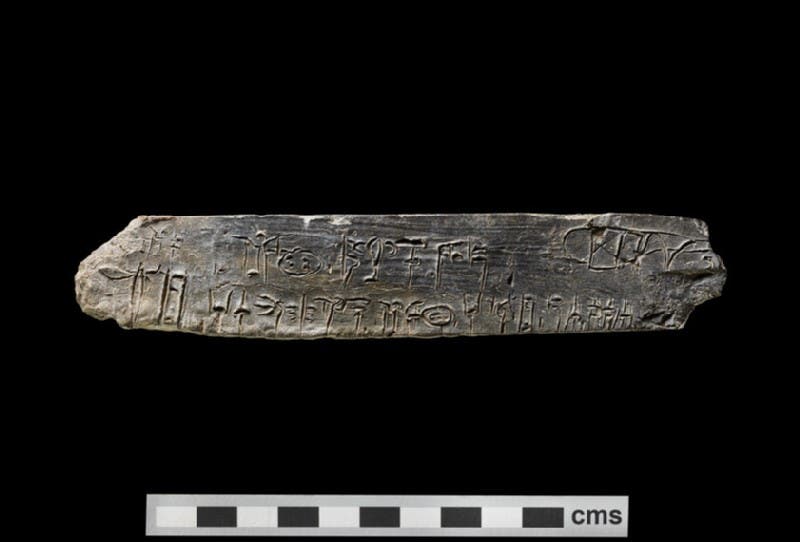Scientist of the Day - Arthur John Evans
Arthur John Evans, a British archaeologist, was born July 8, 1851. Perhaps he inherited his interest in archaeology from his father John, who helped discover the first irrefutable evidence of human antiquity when he and Joseph Prestwich discovered a stone tool in situ in Amiens in 1859. He certainly inherited his father's wealth, which allowed him to fund his own expeditions in search of antiquities. In 1896, Arthur bought a modest chunk of Crete, including a promising site near the north central coast. In the spring of 1900, he began excavations there. Immediately, he and his team uncovered evidence of an extensive palace, Knossos, the abode of the perhaps not-so-legendary King Minos, where Daedalus supposedly built the great labyrinth to confine the Minotaur.
One of the first finds was a room containing an elaborate chair built right into the wall, which Evans interpreted as a Throne, dubbing its location the Throne Room (second image, above). Evans called the civilization he had uncovered, Minoan, after Minos. They soon found an extensive network of rooms (there are some 1300 at Knossos), and numerous fragments of art, including small statues and broken frescoes. One of the frescoes, found in 7 pieces, depicted a charging bull with 3 human figures, two women at the front and back of the bull, and a man inverted above the bull, as if doing a somersault. This would be interpreted by some as evidence of a Minoan sport, bull-leaping, although it is highly unlikely that anyone could survive such a gymnastic effort. Bull-leaping or not, the fresco has been reassembled as best as could be done and is on display at the Heraklion Archaeological Museum, not far from Knossos (third image below).
The Heraklion Museum also has two sculptures of women from Knossos, which Evans called the Snake Goddess (the larger one) and the Snake Priestess; they were seen by Evans as evidence of matriarchal succession in Minoan society (fourth image, below). Many of the artifacts found by Evans are in the Ashmolean Museum at Oxford.
Evans also discovered many clay tablets at Knossos containing written symbols. There was some sort of hieroglyphic writing on a few of the tablets, but others had an abstract script. There seemed to be two different alphabets, and Evans called them Linear A and Linear B. We show a Linear B tablet below (fifth image). This was very exciting at the time, since the Minoan civilization clearly predated Greek civilization, so their writing must have been pre-Greek. Evans was not able to translate any of the three scripts. In 1952, 11 years after Evans’ death in 1941, Michael Ventris and John Chadwick successfully deciphered Linear B, but only because the succeeding Mycenaean civilization had used Linear B to write their Greek language, and Greek was a well-understood language. The Minoans did not speak Greek – in fact, we don't know what language they used, which makes it very difficult to decipher the script. Linear A has resisted the codebreakers right up to the present day.
The most controversial thing Evans did at Knossos was partially rebuild it. Today, this is a great no-no in archaeology, but at the turn of the 20th century, it was not so uncommon. The site at Knossos was in great danger of collapsing during excavation, since all the wooden timbers had rotted away long ago and only the rubble was keeping it intact. So Evans elected to shore things up. His villa nearby was being constructed using a new material, steel-reinforced concrete, and it worked so well that Evans started inserting steel beams and concrete walls at Knossos. We include below a photo showing the rebuilding of the "Grand Staircase", with steel beams in evidence. That is Evans in the back, in the white suit.
The problem for later archaeologists is that the rebuilding was done according to Evans’ fancy, so that the staircase, for example, which originally consisted of five steps, grew to a much grander 11 steps during the reconstruction. The Throne Room was completely rebuilt and repainted, with only the throne still in place, since it was built into the wall and could not be moved. I could include a photo of the restored room, but I will not, since it pains me to look at it. Instead, we show the rebuilt North Portico, with an added roof covering a fresco of a bull (seventh image, below), and red columns added as well.
It has been argued that the reinforced-concrete palace of Knossos was an inspiration for the architectural movement known as Modernism, and that Walter Gropius and the Bauhaus school owed a great debt to Arthur Evans. That sounds intriguing. I will leave this for others to develop or refute.
Dr. William B. Ashworth, Jr., Consultant for the History of Science, Linda Hall Library and Associate Professor emeritus, Department of History, University of Missouri-Kansas City. Comments or corrections are welcome; please direct to ashworthw@umkc.edu.












